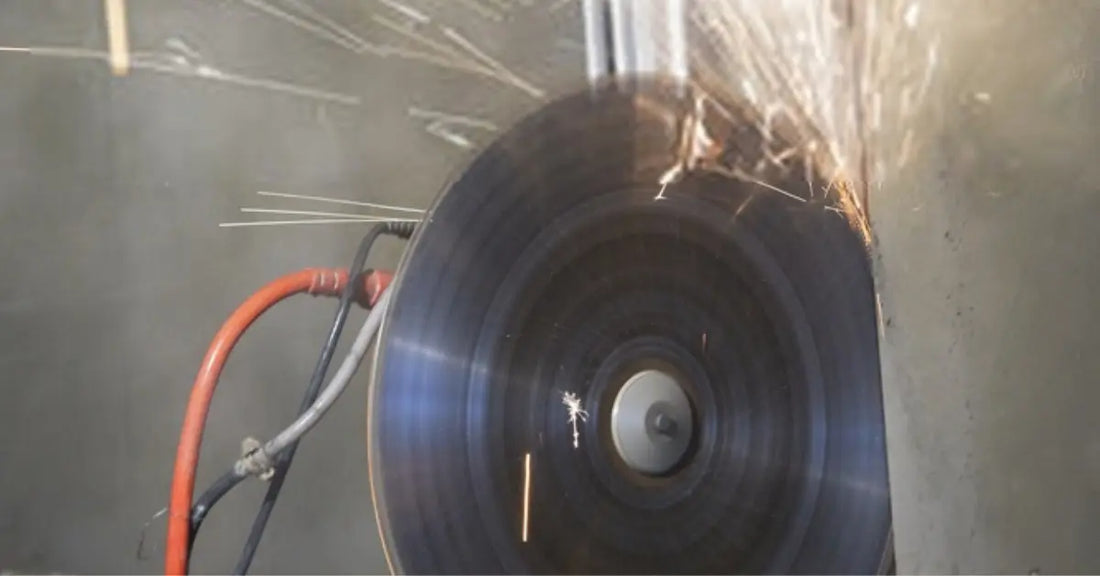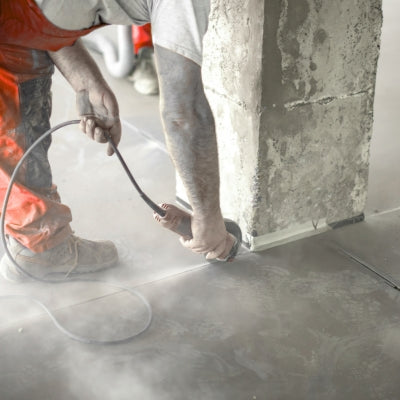
Share
Cutting reinforced concrete how to do it
The key elements for cutting reinforced concrete are the knowledge of the type of material you need to cut and the tools needed to do it. To know the material better, it is essential to know how it was formed, what its strengths and weaknesses are. The tools and techniques for cutting reinforced concrete depend on the strategies that must be applied to avoid sudden collapses and finish the job in maximum safety.
Cutting reinforced concrete: how is it done?
Reinforced concrete is composed of cement, water, aggregate materials (such as sand, inorganic particles, stone) and iron rods. Concrete alone is resistant to pressure but very soft to cut. Reinforced concrete, on the other hand, is a hard material due to the presence of intertwined steel rods or tie rods that guarantee its stability.
Since concrete is only hard in compression and equally weak in shear, it is logical to concentrate one's efforts on the weak point. For this reason, hammering the material could be a waste of energy. The work would become very dangerous in the case of demolition of walls that are already unstable.
Cutting reinforced concrete in a few steps
The best strategy for cutting reinforced concrete is therefore the use of diamond tools. This technology allows you to exploit the weak point of concrete: its weakness to cutting.
- Cut the reinforced concrete on the perimeter of the area you want to extract using a diamond blade. Depending on the depth of the section you can choose the diameter of the right tool and consequently the power and type of machine. A power cutter with a Ø350/400 blade may be sufficient if the wall thickness is not important. In the case of very thick walls, it is advisable to use professional cutting machines with Ø600 to Ø1600 blades.
- Making X-shaped or checkerboard cuts in the concrete to reduce the size of the material that needs to be removed. This process also helps create additional spaces for the concrete to maneuver.
- Drill holes in the reinforced concrete both in the center of the areas to be removed and on the perimeter. We recommend drilling holes close together. This process helps to lighten and soften the concrete, aiding in the subsequent phases of the work.
- At this point if you do not have equipment to remove the entire concrete block you will have to make do with a pneumatic hammer. Make cavities, penetrating the reinforced concrete perpendicularly below 2/3 cm. After that make holes inclined towards the hole or the cut made previously. This way you will always cut the reinforced concrete towards an open space.
What are the critical issues?
There are many critical issues to consider when cutting reinforced concrete. For this reason, we recommend contacting experts in the sector who make this work their reason for living. For example, it is essential to understand that the reinforcement of steel rods provides the material itself with the strength to resist live and dead loads. Cutting steel rods will have a profound impact on how the concrete will break.
Conventional reinforced concrete, in fact, breaks easily when separated from its armature. For this reason, it is advisable to first cut the exposed rods and then vibrate the armature with a demolition hammer with direct blows.
Knowing how steel cables support concrete can make the difference between a safe or catastrophic cut. However, it is difficult to know this information exactly. Both fire departments and cutting and coring professionals rarely know how concrete will react after being cut. For this reason, it is always essential to seek the advice of a specialized structural engineer to ensure that reinforced concrete cutting is done safely.
Cutting concrete with diamond blade
We have seen how cutting concrete is the most logical and effective strategy for demolition. For this reason, there are some things to keep in mind to ensure that the diamond blade expresses its maximum performance:
- Do not overheat the diamond blade. Proper cooling can be ensured by cutting in several quick passes of 1/2 cm depth.
- Keep the diamond blade out of the cut after each pass. This will allow the air to cool the tool and it will be ready for the next cut.
- If the armor is too important, it is possible that the diamond grains become polished or rounded after prolonged contact with the iron. For this reason, it will be enough to pass the disc over an abrasive material such as asphalt or concrete to revive the diamond part.
- Perform wet cutting of reinforced concrete. The presence of water ensures better cutting quality, avoids overheating and contains the presence of dust resulting from the cutting phase
Diamond blade for reinforced concrete
Since 1960 La Nord srl has been producing diamond blades for cutting reinforced concrete, fresh or cured. In the case of reinforced concrete, professional diamond blades have an essential characteristic: high quality of the diamond and the metal matrix.
In our product range you will find the disc that is right for you:
- Ø350, Ø400, Ø450 with 25.4 + T or 30 mm hole for cutting wet reinforced concrete with power cutters
- Ø600, Ø700, Ø800, Ø1000, Ø1200, Ø1600 with hole 60 for cutting wet reinforced concrete with Hilti, Hidrostress or Pentruder cutting machines. In all cases we have the tool with ad hoc holes for wire cutting.
For any other useful information contact us without obligation via the chat on our website or by sending an email to sales@lanordsrl.it



